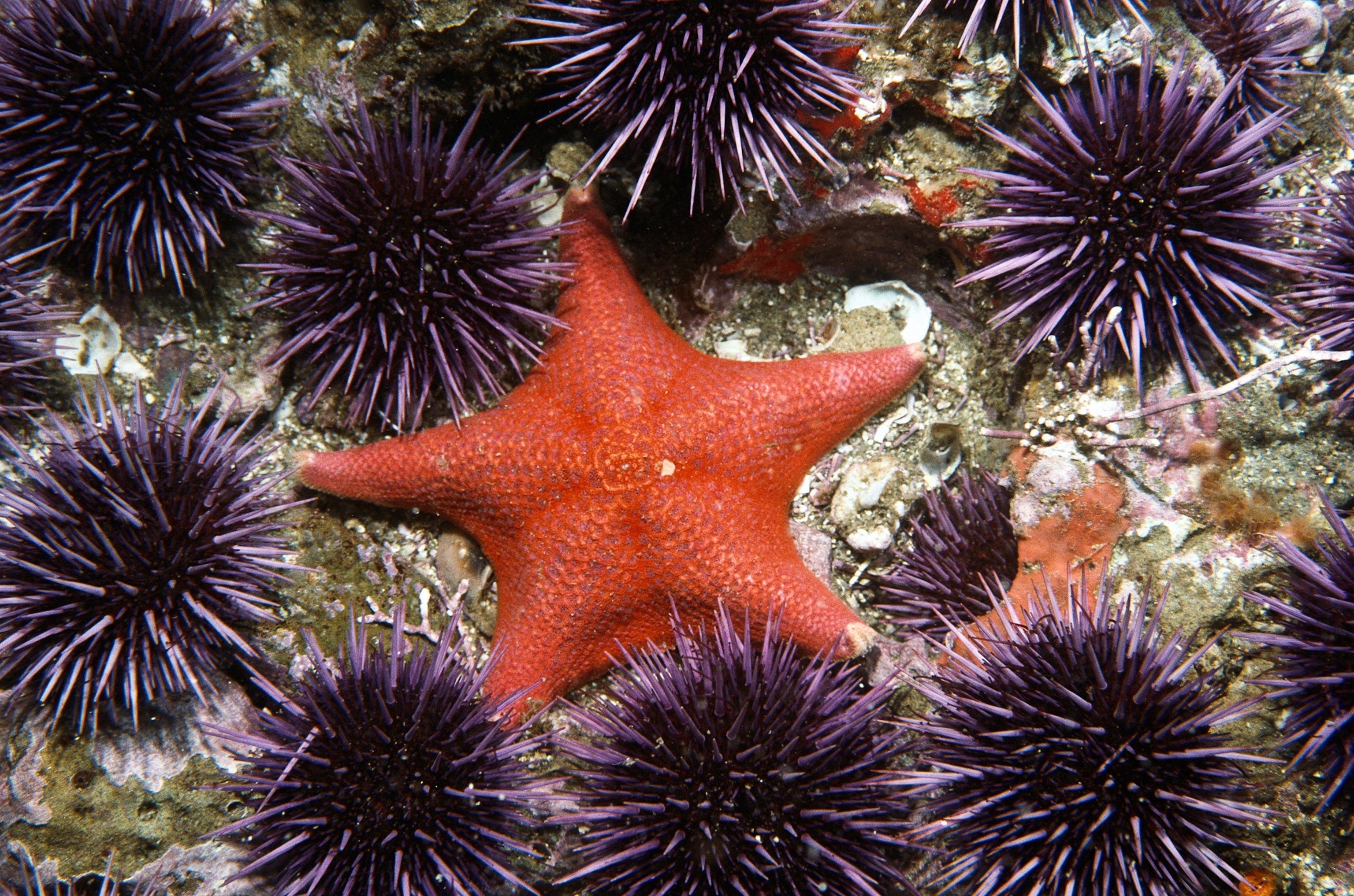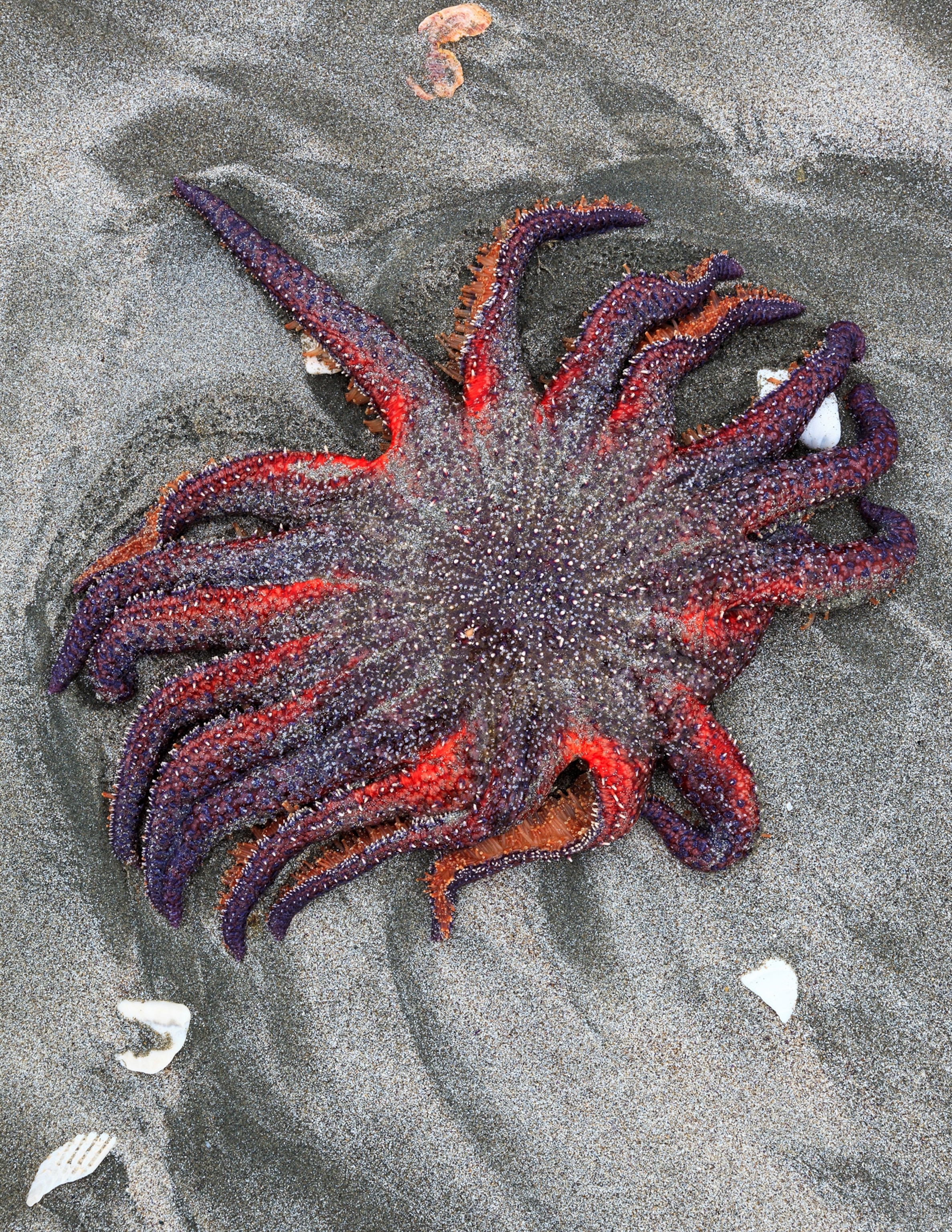
Why Are Millions of Starfish 'Melting'?
A virus is the culprit behind a gruesome wasting disease that has struck sea stars along the West Coast of Canada and the U.S.
For the past year and a half, a killer has been on the loose, taking out millions of starfish up and down the West Coast of North America. By the time it is done with an area, starfish that had once littered the ocean floor have been reduced to mounds of white goo.
The silent killer now appears to be a kind of parvovirus—the group of viruses that cause gastrointestinal problems in unvaccinated dogs—researchers report Monday in the journal Proceedings of the National Academy of Sciences.
Sea stars are linchpins in the ecology of habitats like tide pools, said Robert Paine, a retired marine ecologist at the University of Washington in Seattle, in an interview earlier this year. Without them around to control mussels, the bivalves can take over an area, greatly reducing the kinds of algae and sea anemones present. "The system, for all intents and purposes, simplifies itself."
There's not much researchers can do to stop the virus, though. "We can't quarantine, we can't effectively cull, and we can't vaccinate," said Drew Harvell, a marine ecologist at Cornell University in Ithaca, New York, in an interview earlier this year. The best they can hope for is that populations can recover once the epidemic winds down.
They're Melting
The long-term effects of the virus remain to be seen. For now, infected sea stars, like the purple or ochre star and the sunflower star, die a gruesome death.
The virus weakens the animal, leaving the sea star open to bacterial infection, said lead study author Ian Hewson, a microbiologist at Cornell. And it's that bacterial infection that ultimately kills the sea star.
About eight to 17 days after viral infection, white lesions appear on the body and lethargy sets in. Sometimes the animal's arms rip themselves off and walk away. Eventually, the sea star deflates into a pile of white slime.
Bacteria in the genus Vibrio are common in sick marine animals, said Harvell. There's a possibility that they are the bacterial partner responsible for the "wasting" or "melting" seen in sea stars, but researchers can't tell for sure.
The virus, dubbed the sea star-associated densovirus, is also quite common. "It's been around for 70 years," said Hewson, and "it's probably present all over the world."
Museum specimens from the 1940s have tested positive for the virus, and it lurks in ocean sediments and in seawater. It has even been found in sea star relatives like sea urchins and sea cucumbers.
Urchins and cucumbers seemed to have escaped the ill effects of the virus until now. But in recent weeks, reports have started to come in that they too are dying along beaches in the Pacific Northwest, Hewson said.

Mysterious Trigger
Why such a pervasive virus is suddenly killing millions of animals is still up for debate.
"We've seen big outbreaks in sea stars before," said Pete Raimondi, a marine ecologist with the University of California, Santa Cruz, earlier this year, "but they've been very regional."
This current outbreak stretches from southern Alaska down through Canada and the U.S. West Coast, into Baja California. (See an interactive map of locations.)
Previous events were relegated to one or two species, but the virus is now infecting 20. (See a full list of affected species.)
It's unusual for a single type of virus to infect so many species. But mutations in a key part of a virus, called the capsid, can help the infection spread to more species, the study authors write.
The capsid enables the virus to attach to proteins on a host's cell, Hewson said. The more proteins those capsids can stick to, the more species the virus can infect.
Densely populated areas, like sea star beds, give a virus more chances for its capsid to mutate and take on other species.
Large sea star populations in the Pacific Northwest could be one reason for this virus's sudden march up and down the coast, Hewson said. "Having a huge number of individuals in a small area works like a reactor for this virus." (See "New Diseases, Toxins Harming Marine Life.")
Tracking a Killer
What will the virus do next? Now that they've found their culprit, Hewson and his team are trying to predict what could happen to other sea star populations around the world that are currently disease free. They're also studying the urchins and sea cucumbers that are already dying to see if the same killer is responsible.
But his continued work-and this study-wouldn't have happened without the enormous research and citizen-science community that has popped up across the U.S. and Canada around the epidemic. "This is the first time we've had such a large number of institutions come together to tackle a marine disease problem," Hewson said.
Perhaps, Harvell said, scientists can learn what they need to from this outbreak to prevent or stop the next one.
Follow Jane J. Lee on Twitter.




